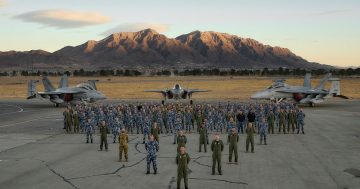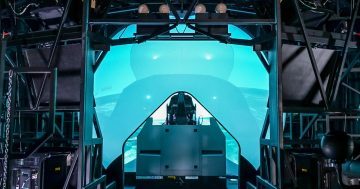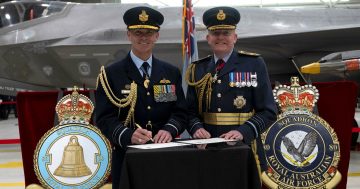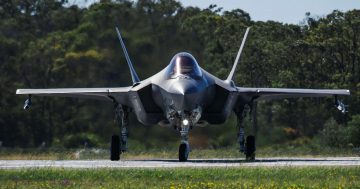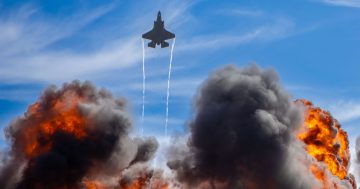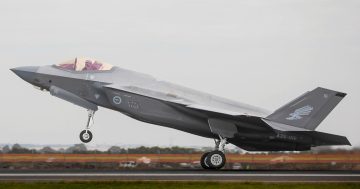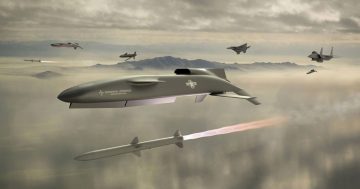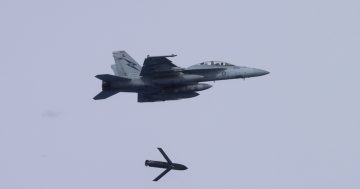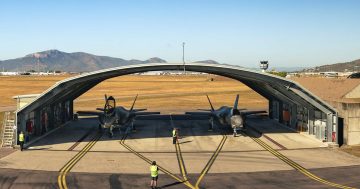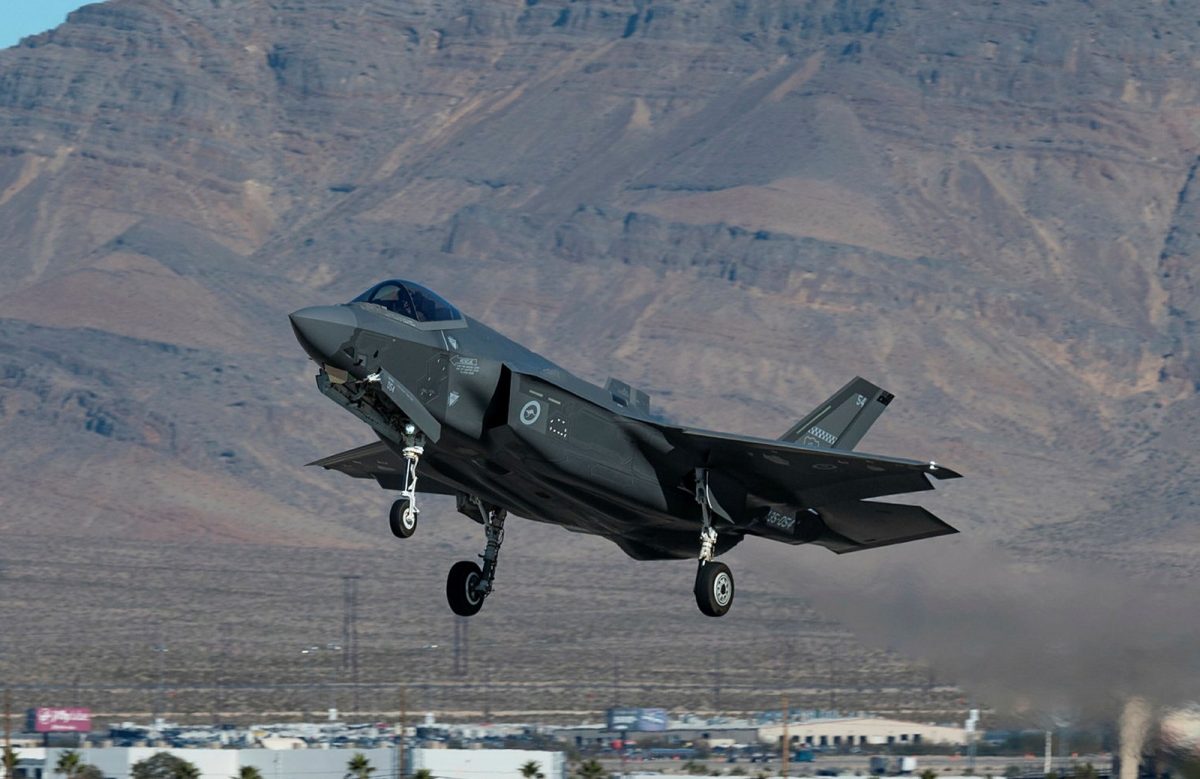
An RAAF F-35A comes in to land at Nellis AFB north of Las Vegas. Photo: USAF.
They say that ”What happens in Vegas, stays in Vegas!’’. But an exception to that rule is Red Flag, the world’s most intense and realistic air combat training exercise, which is held at the US Air Force’s (USAF) Nellis base on the city’s northern fringe. If you’re a combat pilot and you have attended Red Flag, you’ll want to remember exactly what happened so you survive if you have to go to war.
Exercise Red Flag was started in the mid-1970s in response to unacceptable USAF loss rates in the air war over Vietnam, with most cases involving inexperienced crews. So the exercise was designed to simulate the first 10 combat missions pilots will fly to give them realistic experience before they deploy for real.
Red Flag at Nellis has three different participant groups, each gathering once a year. There is a US-only exercise, an allied forces exercise and, as is the case with Red Flag 24-1 (RF24-1), which is currently underway, a Five Eyes-only exercise where only the UK, Canada, New Zealand and Australia may participate with host USAF, Navy and Marine Corps forces.
Las Vegas sits just south of the vast Nellis Test and Training Range, a 32,000-square-kilometre block of airspace that is used for a majority of the multiple-exercise scenarios.
Contemporary Red Flag exercises usually have two ”waves” a day – either a morning and an afternoon wave, or an afternoon and a night wave – with aircraft departing the base at regular intervals to the north where they may refuel from tanker aircraft already on station before the combat scenarios begin.
Rather than being a three-week-long ”war”, each of the exercise’s scenarios or missions has its own discrete goals, with everything resetting for the next scenario.
Squadrons tasked with playing the enemy or ”Red Air” may be based at Nellis or sometimes one of the more sensitive bases nobody talks about that are within the range itself, and are tasked to defend specific targets from attacking ”blue” forces.


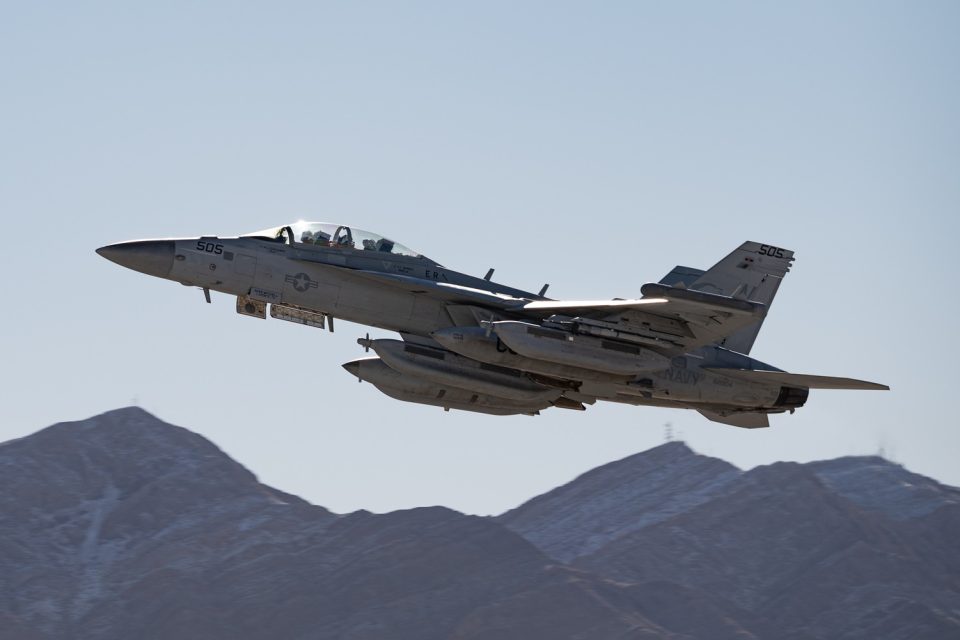

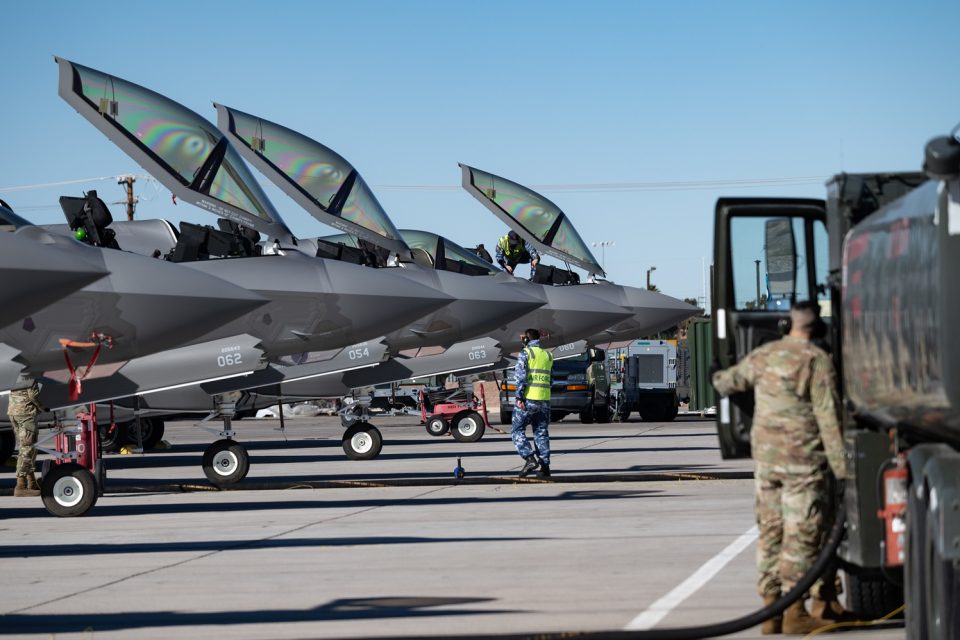



The Royal Australian Air Force has been a regular participant in the Five Eyes exercise for more than 40 years, often deploying combat aircraft, including, this year for the first time, the F-35A Lightning fighter.
The RAAF deployed 150 personnel, mostly from its Williamtown NSW-based No 3 Squadron, and six F-35As drawn from No 81 Wing, which oversees all of the RAAF’s F-35A squadrons. The exercise kicked off on 15 January and is scheduled to run until 2 February.
Other participating RAAF personnel have come from No 1 Combat Communications Squadron, No 3 Control and Reporting Unit (CRU), No 114 Mobile Control and Reporting Unit (MCRU), No 87 Squadron and No 1 Security Forces Squadron.
Other participants include the UK’s Royal Air Force Eurofighter Typhoon FGR4 fighters and a Voyager tanker, US Marine Corps F-35B fighters, and US Navy EA-18G Growler electronic attack aircraft. The host USAF is well represented with F-35A, F-16C, F-15E and F-22 fighters, B-2A and B-52H bombers, E-3G command and control, RC-135V electronic reconnaissance, and KC-135R tanker aircraft.
The Red Air team comprises two dedicated USAF ”Aggressor” squadrons flying F-35As and F-16Cs, while the USAF also provides search-and-rescue functions using Nellis-based HC-130J Hercules and MH-60 helicopters.
In total, more than 100 aircraft and 3000 personnel are taking part.
In a 25 January interview with Region by phone from Nellis, Commanding Officer of RAAF 3 Squadron, Wing Commander Adrian Kiely, said the RAAF F-35As’ performance so far had been “phenomenal”.
“Availability and performance has been excellent,” he said. “We’ve flown all of the lines that we’ve intended to – the F-35, once you’re flying it regularly, tends to be pretty reliable.
“It’s really a different role to what we were flying in a Red Flag with the classic [F/A-18A] Hornet previously, but it’s great to be the aircraft in demand that everyone wants and needs to help solve tactical problems.
“Now we are much more the protector of the older [fourth-generation] jets that are still critically important to the fight, but need advanced sensors, a high level of situational awareness and the kinetic and non-kinetic protection the F-35 can provide to be able to keep their risk to a suitable level.
“Part of the importance of this exercise is working with all of those capabilities so that not just our tactical integration but also our technical integration is proven and practised.
“It’s just a tremendous aircraft to fly, and it’s great to be in really difficult fights and to contribute to solving them in a way that we haven’t previously. It’s really a privilege.”
Original Article published by Andrew McLaughlin on Riotact.


